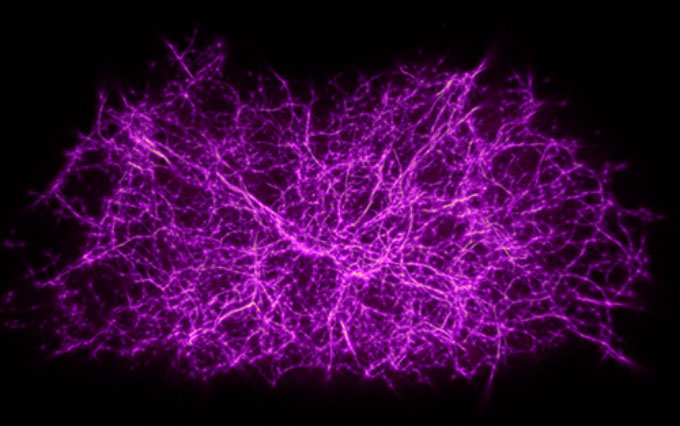Creeping tendrils of slime seem to mirror the structure of the universe’s enormous filaments. That superficial similarity, in an organism called a slime mold, helped scientists map out the cosmic web, the vast threads of matter that connect galaxies.
Made up of gas and the unidentified substance called dark matter, the cosmic web began forming early in the universe’s history, as matter clumped together due to gravity. Computer simulations of that formation suggest that a tangled tatting should link galaxies, but the web is so ethereal that scientists struggle to image it directly (SN: 10/3/19).
Enter the slime mold Physarum polycephalum, a single-celled organism that appears as a slimy yellowish lace, often seen bedazzling rotting tree trunks. Normally, a slime mold forms connections between sources of food. Its patterns have striking similarity to human-made networks, such as railroads (SN: 1/21/10).
 Scientists produced this map of the universe’s cosmic web based on locations and masses of known galaxies and the lacy patterns of slime mold.J. Burchett et al/Astrophysical Journal Letters 2020
Scientists produced this map of the universe’s cosmic web based on locations and masses of known galaxies and the lacy patterns of slime mold.J. Burchett et al/Astrophysical Journal Letters 2020
Astronomer Joseph Burchett and computer scientist Oskar Elek, both of the University of California, Santa Cruz, and colleagues adapted a computer method for producing slime mold–like patterns so that, instead of food sources, it could connect more than 37,000 known galaxies sprinkled throughout space. Surprisingly, that technique reproduced the kinds of structures seen in computer simulations of the cosmic web, scientists report March 10 in the Astrophysical Journal Letters.
The researchers compared their map with measurements that reveal the density of gas at certain points in the web. Brilliant sources of light called quasars shine through this network, which absorbs some of their light. By studying the amount of absorption, the team found that regions that the slime mold technique predicted should be somewhat denser also had more hydrogen gas.
Source: Space & Astronomy - www.sciencenews.org



